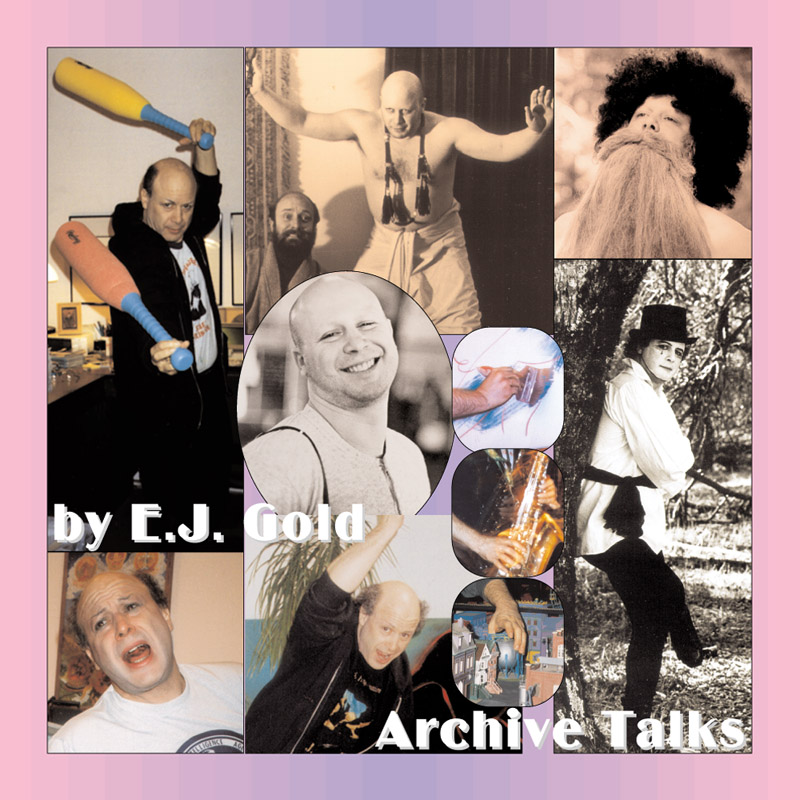

CDT337
Enlightenment
Synopsis
The talk is a free-flowing discourse on enlightenment, conceptual thought, perception, and human programming. The speaker explores the futility of searching for an ultimate meaning of enlightenment, arguing that it is a fleeting moment rather than a fixed state. Through humor, cultural references, and interactive exercises, the discussion also addresses human conditioning, the inevitability of personal biases, and the ways in which individuals unconsciously absorb societal influences. The latter half of the talk integrates musical references, particularly The Beatles, to demonstrate how deeply ingrained certain ideologies and patterns are in public consciousness.
Summary
The speaker begins with a playful and somewhat erratic discussion of historical and mythical references before settling into a contemplative theme surrounding enlightenment. They introduce the idea that enlightenment is not a static achievement but a momentary flicker of clarity. In doing so, they challenge the audience to examine their assumptions, habits, and perceptions.
A central metaphor compares enlightenment to a lock without a key; the pursuit itself can often reinforce self-created barriers. This leads to an analysis of how secrets self-perpetuate—people seeking them often prevent themselves from truly understanding. The speaker suggests that enlightenment has no clear definition, making its pursuit paradoxical.
Later, the conversation expands to touch on human programming, particularly how individuals internalize cultural and media patterns unconsciously. The speaker illustrates this by having the audience participate in a spontaneous group performance of Beatles songs, demonstrating how deeply embedded certain melodies and lyrics are in the collective memory. This serves as evidence of the extent to which society shapes individual thought.
References to time travel, quantum theory, and interdimensional shifts are also woven in, hinting at a broader philosophical viewpoint that challenges deterministic perspectives. Alongside humor regarding technology and social structures, the talk humorously critiques the commodification of knowledge, as seen in media publications selling enlightenment as a concept.
Ultimately, the talk plays with contradictions—embracing enlightenment while rejecting definitions, celebrating knowledge while arguing that knowing too much can be a burden. The presentation is a blend of intellectual engagement and performance art, aiming to awaken a sense of awareness in the listeners.
Keywords and Key Phrases
- Enlightenment as a fleeting state
- Lock without a key
- Secret keeps itself
- Programming and societal conditioning
- NPCs (non-player characters) and human perception
- Guiltimacy.com (concept of guilt and legitimacy)
- Meditation is not a hardware problem
- Quantum perspectives in daily life
- Parallel universe theory
- Beatles as cultural imprinting
- Unconscious musical recall
- Predictive knowledge and ethical constraints
- Trinary logic applied to enlightenment
- Psychedelic perception and social programming
- Oscilloscope waves and metaphysical symbolism
- Super-burbs and evolving social structures
- Interdimensional awareness
- Engineering approach to questions
- Recursive questioning and self-inquiry
- Virtual space and future technology
Graphic Prompt
A surreal, dreamlike scene with a meditating figure seated in a timeless void, surrounded by cascading waves of sound and light. Ghostly outlines of The Beatles’ faces emerge from the ripples, subtly blending with an old oscilloscope display forming sine waves. A cosmic key floats above the figure, yet the lock it belongs to dissolves into golden mist, symbolizing the illusion of barriers. The background is fractal, shifting into infinite recursive doorways, each leading to a dimension of thought. Rendered in a painterly, slightly psychedelic style, reminiscent of classic 1970s album covers with a modern digital touch.



